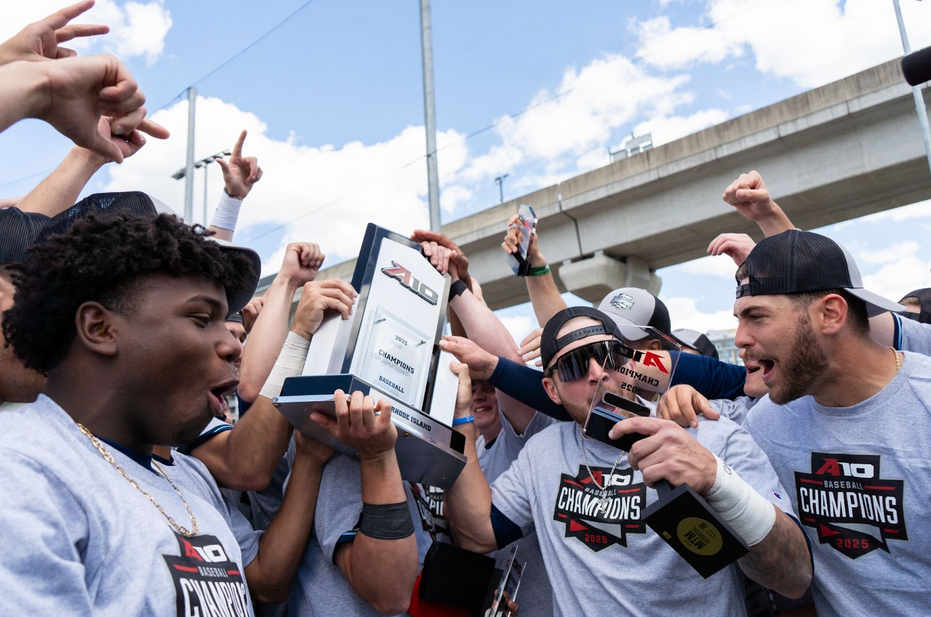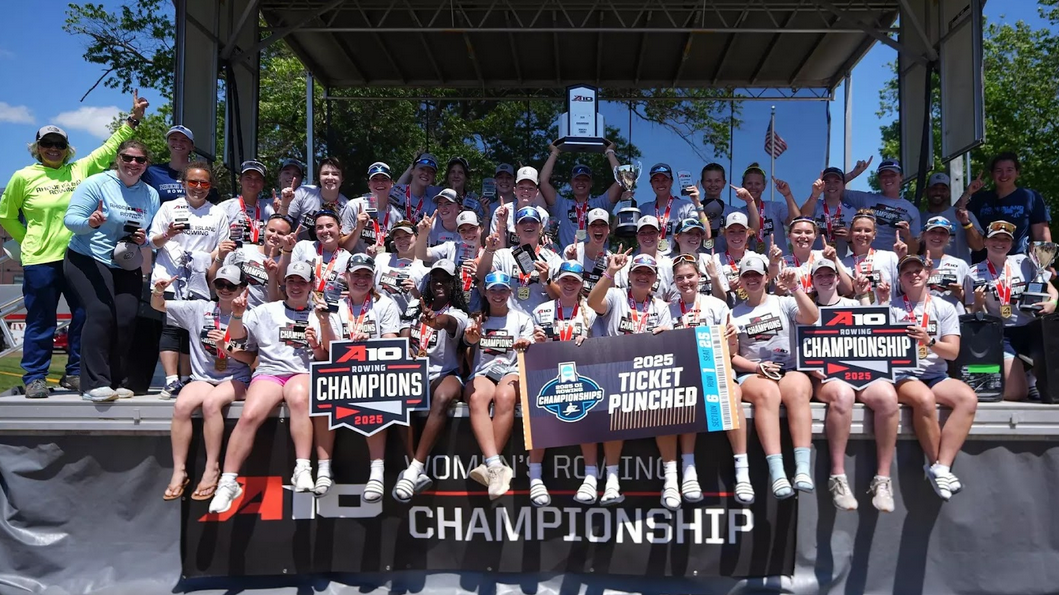The equestrian team participated in the Region’s Ride For Mika Show in 2018. Photo contributed by URI Equestrian club.
For most, horseback riding is not the most popular or well-known sport. But for the University of Rhode Island equestrian team and their Club President Raechel Griffin, it has been a lifelong passion.
“I think I got into it because I’ve always loved horses,” she said. “I was the little kid that always wanted to get on a pony. I always wanted a pony.”
Having taken lessons since the age of nine, Griffin knew she wanted to join a collegiate team at the next level. In fact, she didn’t even consider attending a school that did not offer an equestrian team.
Now, Griffin is part of a team that has been Zone 1 Region 1 champions for their last five seasons. In the Intercollegiate Horse Show Association (IHSA), they compete against a number of teams throughout the New England area, including Brown, Roger Williams, Johnson & Wales and Salve Regina. While competitions against these teams are often decided by only a few points, Brown and Roger Williams have consistently been two of the most competitive schools URI faces. Both of Ocean State rivals have also made regular trips to regionals in recent years.
The competition that the team looks forward to the most each year is their home show. They host all of the other teams in the region at their facility at Hunter Ridge in Ashaway, Rhode Island, and riders at all levels have a chance to compete. The event features over 200 riders, and Callie Jackson, the team’s treasurer, believes the event would not be what it is without the busy months of preparation put in beforehand.
“I might be biased but I think our show runs the most efficiently compared to the other schools’ shows,” she said. “We’re always so proud of our home shows and work really hard to make sure everyone has a successful, fun showing experience.”
The team operates out of the previously mentioned Hunter Ridge. In addition to supplying all of the team’s horses, they also hold weekly lessons, which are composed of small groups based on skill level and experience.
“Our practices look a little different than most teams,” Jackson explained. “For our weekly lessons at the beginning of each semester we split up our team into small groups, usually about two and four people, depending on their ability level and class schedule.”
Anyone on the team also has the option of taking an extra practice ride during the week. These are individual, unsupervised rides that can be done at any time outside of practice, and there is no limit to how many practices each individual can attend per week.
One of the most striking differences between horseback riding and other sports is the element of nature involved. Rather than using objects like a ball or puck, the sport involves living animals. While most sports revolve around taking control of such an object, being able to form a connection and work together with another living being is the main goal; a connection that not many athletes get to experience in their sport of choice.
“I’ve always loved horses, they’re such a special animal,” explained Griffin. “There’s such a bond you can have with a horse that a lot of people don’t realize.”
As with all fall athletics, the equestrian team will not be holding any events this year. With the nature of the sport and how the groups are divided, the team has not experienced any major changes aside from wearing masks and making sure all surfaces are being sanitized and cleaned. But the lack of meaningful competition looms large, and the team is looking forward in anticipation of their next major show.



